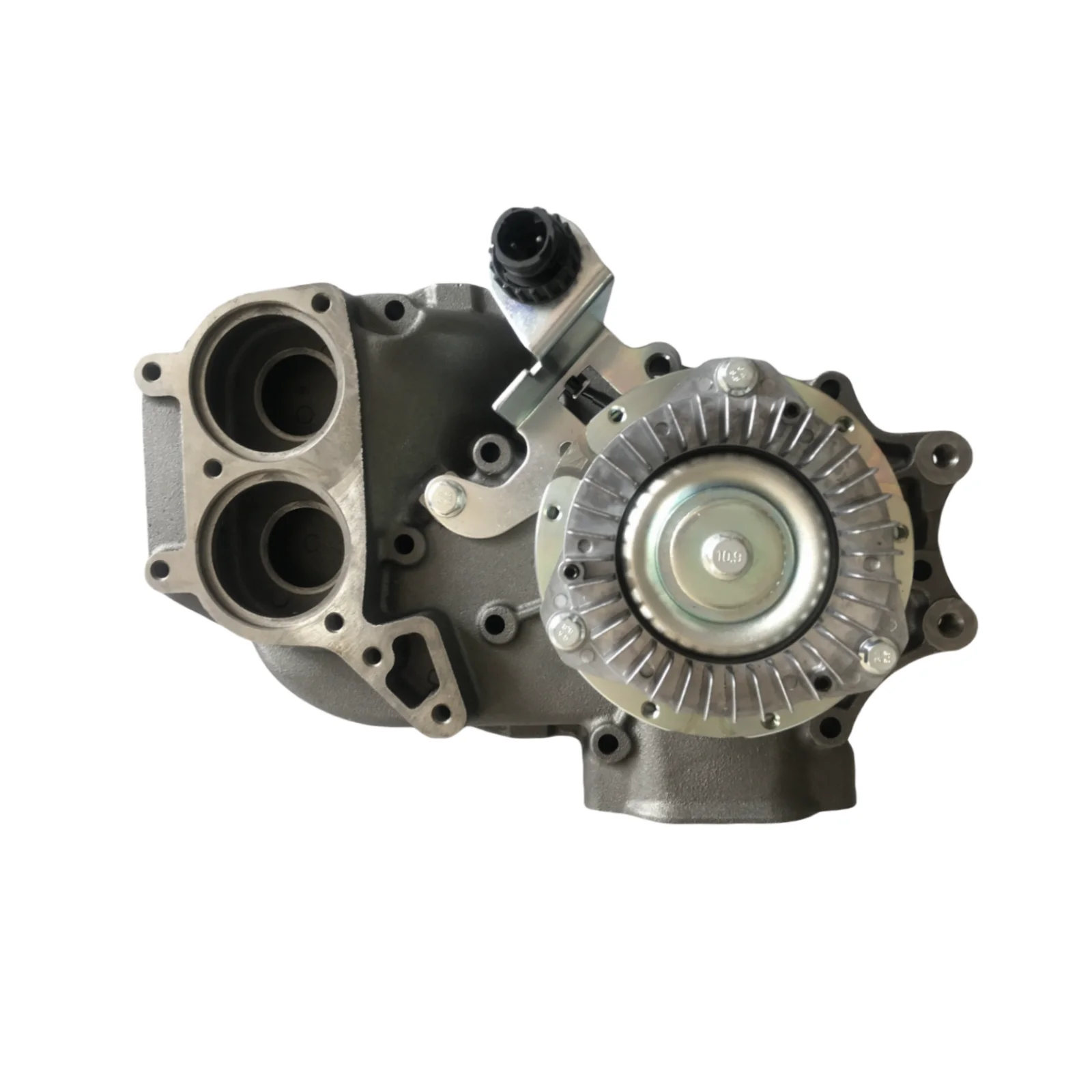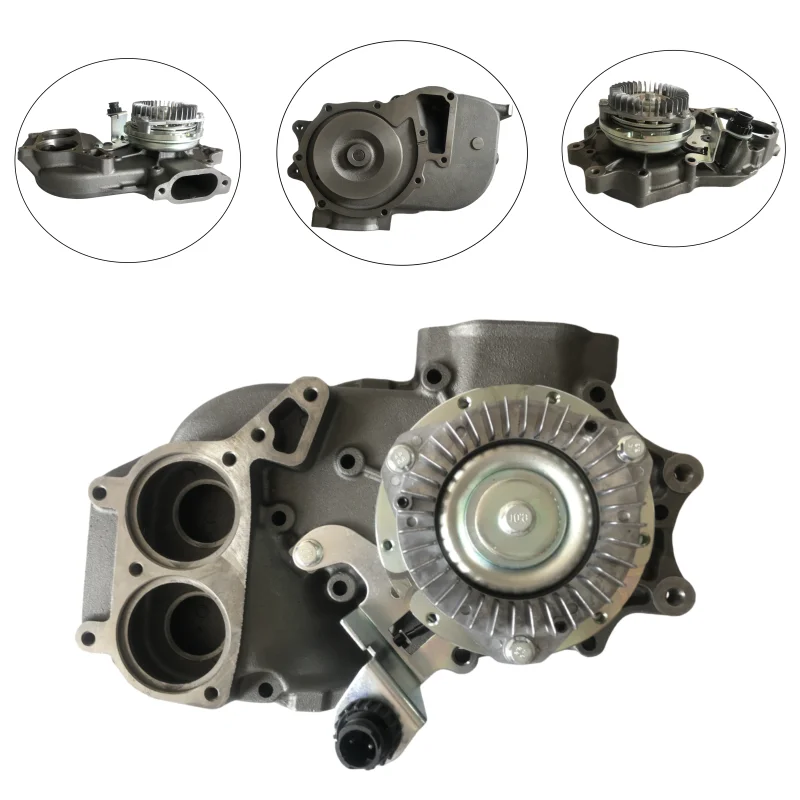When it comes to the smooth operation of your vehicle, a reliable truck water pump is essential. This crucial component ensures proper circulation of coolant to prevent overheating and maintain optimal engine performance. Understanding the signs of a failing water pump can save you from costly repairs and unexpected breakdowns on the road. Stay informed about common symptoms like coolant leaks, engine overheating, or unusual noises to address issues promptly. Regular maintenance and timely replacement of your truck's water pump can prolong the life of your vehicle and keep you driving safely. Learn more about the importance of this component and how to spot potential problems before they escalate.
The Role of Water Pumps in Industry
Industrial Applications
Water pumps play a crucial role in various industries such as agriculture, construction, and firefighting. In agriculture, they are used for irrigation systems to ensure crops receive adequate water supply.
Water pumps are vital in construction sites for tasks like dewatering, where excess water needs to be removed to enable safe working conditions. In firefighting operations, water pumps are essential for supplying water to extinguish fires effectively.
Preventing Downtime
Water pumps are instrumental in maintaining operations across different industries. In agriculture, a breakdown in the water pump system can lead to crop damage due to inadequate watering. Similarly, in construction, downtime caused by pump failures can delay project timelines and increase costs.
In firefighting scenarios, any malfunction in the water pump equipment can significantly impact the ability to control and extinguish fires promptly. Therefore, regular maintenance and monitoring of water pumps are critical to prevent costly downtime.
Efficient Water Transfer
Efficient water transfer and distribution are facilitated by the use of water pumps. In agricultural settings, water pumps help transport water from sources like wells or reservoirs to fields through irrigation systems. This process ensures that crops receive sufficient moisture for optimal growth and yield.
Moreover, in construction projects, water pumps aid in transferring large volumes of water efficiently for tasks such as concrete mixing or dust suppression. This seamless transfer of water is essential for maintaining productivity and meeting project deadlines.
Overview of Water Pump Components
Impeller
The impeller is a crucial component of a water pump that rotates and generates centrifugal force to push water through the pump. It consists of curved blades that propel the fluid towards the pump outlet.
The impeller plays a vital role in increasing the water's kinetic energy, allowing it to move efficiently through the pump system. As the impeller spins, it creates a low-pressure zone at the center, drawing water into the pump and then pushing it outward with force.
Casing
The casing serves as the outer shell of the water pump, enclosing and protecting the internal components such as the impeller and shaft. It is designed to withstand high pressure and prevent leakage of water during operation.
The casing also helps direct the flow of water through the pump by creating a channel for the fluid to pass from the inlet to the outlet. By containing and guiding the water, the casing ensures smooth and efficient pumping action.
Shaft
The shaft is a sturdy rod that connects the motor to the impeller inside the pump. It transmits mechanical power from the motor to drive the rotation of the impeller, enabling it to generate centrifugal force for pumping water.
The shaft plays a critical role in transferring rotational energy from the motor to the impeller, ensuring that sufficient power is delivered to propel water effectively. It must be durable and well-aligned to maintain smooth operation of the pump.
Collaboration for Efficient Pumping
-
The impeller, casing, and shaft work together harmoniously to ensure effective pumping of water in a water pump system.
-
The impeller generates centrifugal force, pushing water towards the casing where it is directed towards the outlet.
-
The shaft transmits power from the motor to drive this process, ensuring continuous circulation and flow of water through the pump.
Understanding the Pumping Process
Water Pump Operation
Water pumps utilize mechanical force to move water through pipes from one place to another. The process involves the pump drawing water in through a suction mechanism and then pushing it out through a discharge outlet.
Water pumps are essential in various applications, such as agriculture, firefighting, and plumbing systems. They help maintain consistent water flow and pressure for efficient operations.
Suction and Discharge Principles
The suction process begins when the pump creates a vacuum that pulls water into the system. This occurs due to the pump's ability to lower pressure within the pipes, allowing atmospheric pressure to push water into the pump.
On the other hand, the discharge phase involves expelling water from the pump at high pressure. This is achieved by increasing pressure within the pump, forcing water out of the system and towards its intended destination.
Importance of Efficient Pumping
A well-functioning pumping process is crucial for optimal performance. It ensures that water is effectively transported where it is needed without delays or interruptions. Proper maintenance of pumps, including checking for leaks or blockages, is essential to prevent breakdowns and ensure continuous operation.
-
Pros:
-
Efficient water transportation
-
Consistent flow and pressure maintenance

Key Features of Truck Water Pumps
Pump Models
Truck water pumps come in various models to cater to different needs, such as the hydraulic drive model and cart-mounted options.
Size and Flow Rates
The Berkeley Centrifugal Frame Mount Water Truck Pump offers a diverse range of sizes and flow rates, ensuring compatibility with various truck capacities.
The pump sizes typically vary from compact options suitable for smaller trucks to larger models designed for heavy-duty vehicles. These variations allow users to select a pump that aligns with their specific truck requirements.
Product SKUs
Berkeley provides distinct SKUs for their Centrifugal Frame Mount Water Truck Pumps, simplifying the selection process for customers. Each SKU corresponds to a particular model, making it easy to identify and choose the desired pump based on specifications.
Suction and Discharge Size Explained
Importance of Sizes
Suction and discharge sizes play a crucial role in determining the efficiency of water pumps. The size directly affects the pump's ability to draw in and expel water effectively.
Selecting the right sizes is vital for optimal pump performance. Mismatched sizes can lead to inefficiencies, reducing the overall effectiveness of the water pump system.
Impact on Flow Rate
The suction size influences how much water the pump can intake, affecting its flow rate. A larger size allows for more significant volumes of water to be drawn in, enhancing efficiency.
On the other hand, the discharge size determines how quickly water can be expelled from the pump. A larger discharge size facilitates faster water flow rates, crucial for specific applications.
Selecting Appropriate Sizes
When choosing suction and discharge sizes for a truck water pump, factors such as pipe diameter, system pressure, and desired flow rate must be considered.
For applications requiring high flow rates, opting for larger suction and discharge sizes is advisable. This ensures that the pump can handle substantial volumes of water efficiently.
In contrast, scenarios where precise flow control is necessary may benefit from smaller sizes to regulate water output accurately.
Considerations:
-
Matching suction and discharge sizes improves overall pump efficiency.
-
Larger sizes enhance flow rates but may not always be suitable for every application.
-
Smaller sizes allow for better control over water flow but might limit overall output capacity.
Shaft Types and Their Importance
Coupling Drive
Coupling Drive: This type of shaft in water pumps involves a direct connection between the motor and pump shaft. It eliminates the need for belts, offering a more efficient power transfer mechanism. The coupling drive ensures a direct and synchronized rotation between the motor and pump shaft, enhancing overall pump performance.
Importance: Selecting the right shaft type is crucial as it directly impacts the efficiency and longevity of the water pump. The coupling drive's direct connection minimizes energy loss due to belt slippage, ensuring optimal power transmission. This results in improved pump reliability and reduced maintenance requirements.
Belt Drive
Belt Drive: In this setup, the motor shaft connects to the pump shaft through a system of pulleys and belts. The belt drive offers flexibility in adjusting the pump's speed by changing pulley sizes. It allows for easy maintenance and replacement of belts when needed.
Importance: When choosing between shaft types, considering factors like operational requirements, maintenance ease, and energy efficiency is essential. The belt drive's flexibility in adjusting speeds can be advantageous in applications where varying flow rates are necessary. However, regular inspection of belts is crucial to prevent unexpected failures.
Rotation Direction Influence
The rotation direction of the water pump shaft plays a vital role in its functionality. Depending on the application, pumps may require clockwise or counterclockwise rotation for optimal performance. Incorrect rotation direction can lead to inefficiencies, reduced flow rates, or even damage to the pump components.
Selecting the appropriate shaft type ensures that the water pump rotates in the desired direction based on operational needs. This alignment guarantees that the pump operates efficiently, meeting specific flow rate and pressure requirements.

Summary
The detailed exploration of truck water pumps sheds light on their crucial role in various industries. Understanding the components, pumping process, and key features is essential for selecting the right pump. Factors like suction and discharge size, shaft types, impeller size, and seal types play a significant role in the performance of these pumps. By following the tips provided, individuals can make informed decisions when choosing a water pump for their specific needs.
For those operating in industries reliant on efficient water circulation systems, applying the knowledge gained from this article can lead to improved pump selection processes. It is imperative to consider all aspects discussed to ensure optimal performance and longevity of truck water pumps. By staying informed and making educated choices, individuals can enhance productivity and minimize downtime related to water pump issues.
YINYI
wxam.assistant@marketingforce.com

